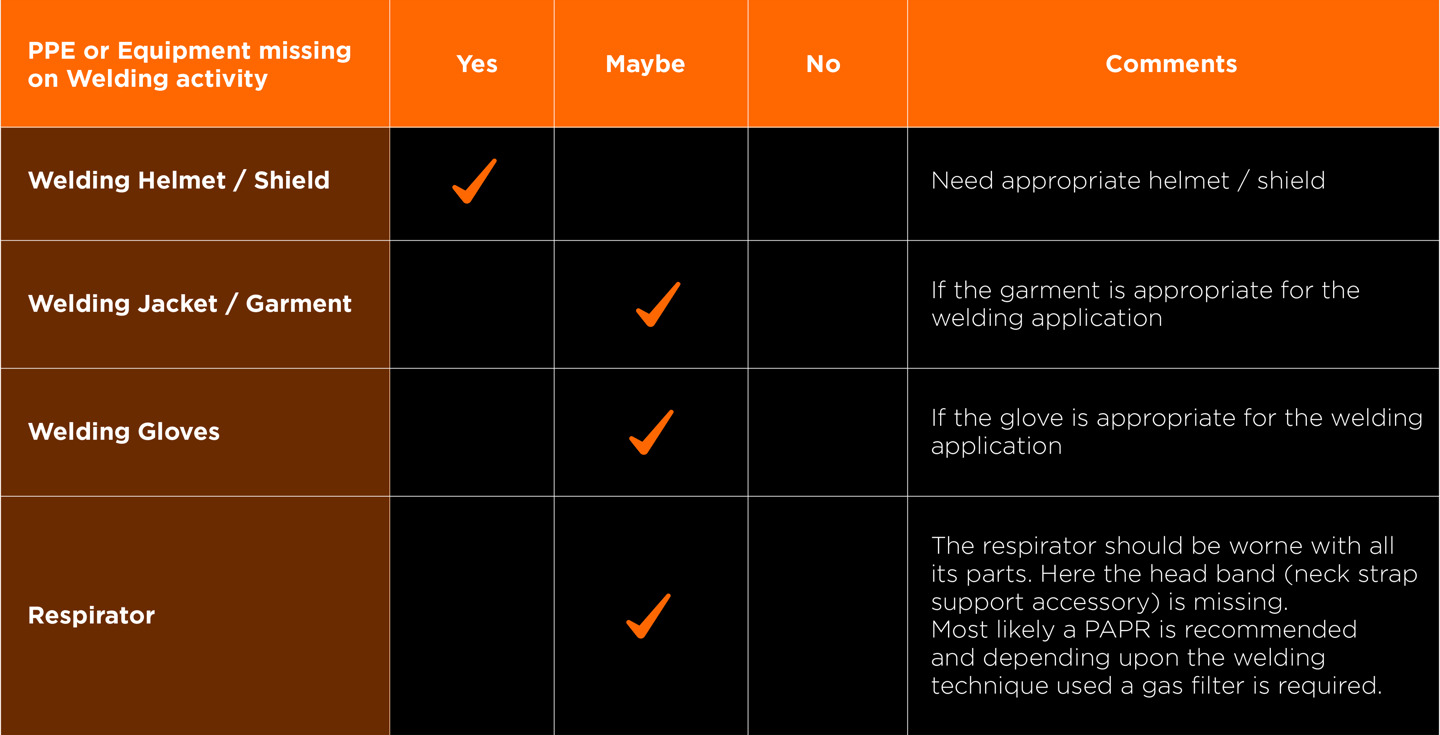Welding

Welding can be a dangerous activity if you are not properly protected. Make sure you are wearing all the necessary welding PPE to stay safe while welding according to the risk assesment. The various hazards associated with welding are sparks, UV radiation, burns, and fumes. Here's a comprehensive guide to help you select the right PPE for welding.
Welding Helmet with Auto-Darkening Lens: A welding helmet with an auto-darkening lens is essential. It automatically adjusts the shade level to protect your eyes from the intense light generated during welding. Make sure it meets the related safety standards.
Welding Gloves: High-quality welding gloves made of heat-resistant materials like leather are essential to protect your hands from burns, sparks, and hot metal.
Welding Jacket or Welding Cape: Wear a flame-resistant welding jacket or cape made of materials like leather or flame-resistant cotton to protect your upper body from sparks, heat, and UV radiation.
Welding Sleeves: Welding sleeves provide extra protection for your arms and should be flame-resistant and heat-resistant. They can be worn in addition to a welding jacket.
Welding Apron: A welding apron offers added protection for your lower body and legs. It's especially useful if you're doing a lot of overhead welding.
Respiratory Protection: Depending on the type of welding and materials used, welding can produce harmful fumes and gases. Use a respirator or welding-specific respiratory protection to prevent inhalation of these contaminants. Ensure it's rated for the specific welding processes you are using. MAASC with TM3 protection value and its P3 filter is perfect respiratory protection against the welding particulates and fumes based on the welding methods.
Welding Boots: Welding boots with a steel or composite toe cap and heat-resistant soles protect your feet from falling objects, hot metal, and sparks.
Welding Cap or Beanie: A welding cap or beanie made of flame-resistant material can protect your head and hair from sparks and UV radiation.
Safety Glasses or Goggles: Wear safety glasses or goggles with side shields to protect your eyes from flying debris and sparks when you lift your welding helmet.
Ear Protection: Welding can be noisy, so use earplugs or earmuffs to protect your hearing.
Welding Curtain or Screen: Use welding curtains or screens to create a designated welding area and protect nearby workers from UV radiation and sparks.
Skin Protection: Exposed skin can be susceptible to burns from radiant heat. Ensure your clothing covers as much skin as possible, and consider using heat-resistant welding blankets or mats to shield nearby surfaces.
Ensure you have proper training and certification in welding techniques and safety procedures. Knowledge and experience are essential for safe welding practices.
Always follow the safety guidelines provided by your employer, HSE Risk Assesments and local regulations. Regularly inspect and maintain your PPE to ensure it remains effective and safe for use.
The video from our website is a real example in a welding dedicated work environment.
Could you note any missing PPE in this video?


